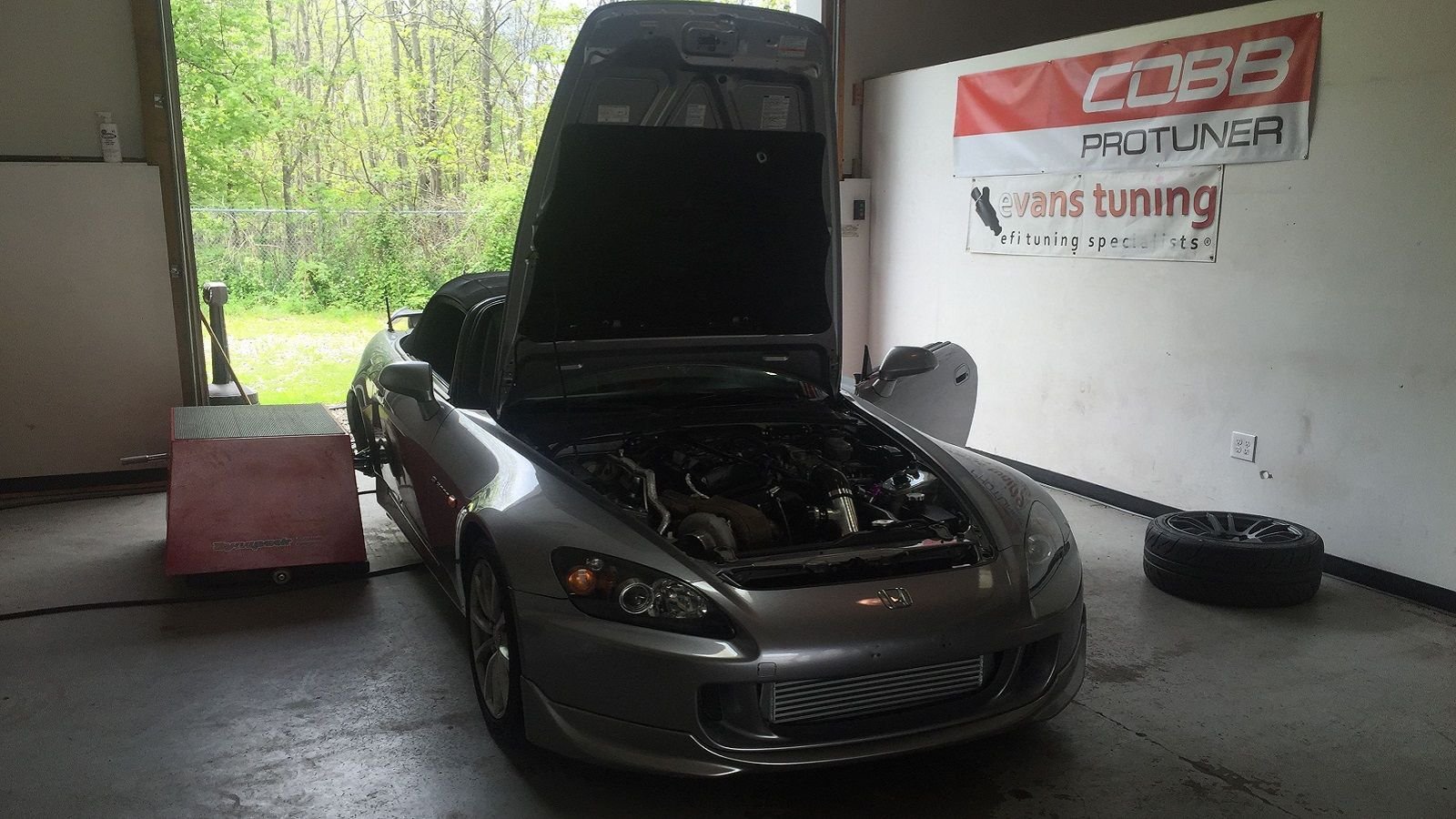Thinking of Adding a Turbo on an S2000?
The Honda S2000 is quite a potent machine in stock form with its lightweight chassis coupled with a spirited 4-cylinder engine. That said, the little sport roadster is capable of producing supercar-esque performance numbers with the application of a turbo kit.












The Allure of The Turbo
The F20 and F22 Honda engines respond surprisingly well to added air supplied by a turbocharger. The stock cylinder heads on both of these engine flow incredibly well, and with a robust bottom-end from the factory, safe and reliable power increases are available with little to no internal engine modifications. As a general rule of thumb, people report these engines can easily handle 10-12 psi of boost using pump gas, while maintaining great reliability. So if you are looking to add an easy 100 horsepower or more to your S2000, turbocharging is a viable option.
>>Join the conversation about Adding a Turbo on an S2000? right here in the S2ki Forum!
Tremendous Turbochargers
Important things to consider before turbocharging an S2000 are what the car will be used for, and the power goals you want to achieve. For a mild boost in performance on a budget, many have successfully used the Greddy T518Z turbo that is capable of supporting a reliable 300~375 horsepower. For those looking for additional performance, the trusty Garrett GT3076R ball-bearing turbo can easily support 500 horsepower with proper tuning. While these are not the only turbos that can be used, they are the units used in the popular turbo kits that are available. If your goals are higher horsepower levels than those, it is highly recommended that the internal engine components be upgraded.
>>Join the conversation about Adding a Turbo on an S2000? right here in the S2ki Forum!
Intercooler and Intake Plumbing
To cool the intake air charge coming from the turbocharger, an intercooler will need to be installed. Fortunately, installing an intercooler is straightforward as they typically fit neatly in front of the radiator, just inside of the bumper cover. Simply remove the bumper cover, center the intercooler, and mount it using any number of aftermarket mounts supplied by various manufacturers. Similarly, plumbing from the turbo, through the intercooler, and into the intake will have to be routed throughout the engine bay. Plumbing is relatively simple to install as well and often only requires minor cutting of plastic trim pieces to get it all to fit. Check out companies such as PFrabrications and Full-Race that offer S2000 specific kits with piping designed to make your turbo install a breeze.
>>Join the conversation about Adding a Turbo on an S2000? right here in the S2ki Forum!
Exhaust Setup
The exhaust system is an integral part of any turbo install, unleashing extra horsepower if done correctly, or choking the engine if poorly designed. Turbochargers work best with the least amount of exhaust back pressure possible, and this is especially true in the case of the high revving S2000 engines. For the best performance, a tubular header with equal length primaries is the way to go from motor to turbo. From the turbo, a downpipe, preferably 3 inches in diameter, will be needed to tie the remainder of the exhaust back together. Most prefer exhaust setups that utilize v-band clamps because of their leak-free nature. Exhaust choices are almost endless with options available from Sheepey Inc., SpeedForce Racing, and Full-Race, to name a few.
>>Join the conversation about Adding a Turbo on an S2000? right here in the S2ki Forum!
Fueling, Tuning, and More...
To support the increased horsepower provided by a turbo kit, upgrades to the fuel system will be needed. Larger plug-n-play fuel injectors with higher flow rates coupled with a higher output fuel pump will quench the thirst of the boosted engine. Tuning the ECU will be required on even the mildest of builds, and can be accomplished with a simple OBD port tuner such as Hondata. For those pushing the limits of their car, a standalone ecu such as those offered from Haltech, ProEFI, or AEM can offer greater tuning capabilities, especially in the hands of a seasoned tuner on a dyno. A few other items of note are new spark plugs, motor mounts if the stock mounts are worn, and routing any necessary oil and coolant lines to the turbocharger. Finally, it may be a good time to install a new performance clutch as the extra horsepower has been known to kill clutches, especially higher mileage units.
>>Join the conversation about Adding a Turbo on an S2000? right here in the S2ki Forum!
Heat Protection
The S2000 engine bay is pretty cramped in stock form, but installing a turbo kit is like stuffing 10 pounds of potatoes in a 5 pound bag. With the excessive heat that the turbo will produce and its close proximity to many vital components, necessary precautions must be taken by adding heat protection film or similar to the engine bay. The most important areas to focus on are the air-conditioning lines, the fusebox, coolant (heater) hoses, and the VTEC solenoid. Similarly, the right frame rail (passenger side) tends to absorb a lot of heat from the turbo and exhaust, so it is also recommended to protect the wiring harness and power steering lines in this area. Using header wrap on the exhaust manifold and a turbo blanket can also go a long way in containing the heat. Note that depending on the turbo kit you install, things like the fusebox, VTEC solenoid, or even the battery may need to be relocated.
>>Join the conversation about Adding a Turbo on an S2000? right here in the S2ki Forum!
